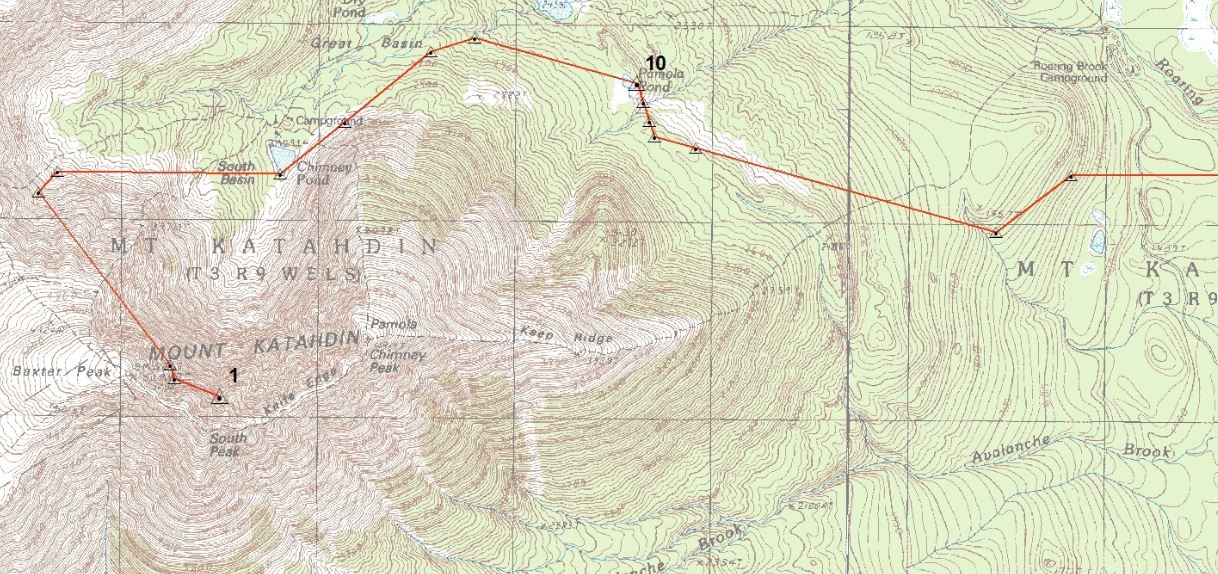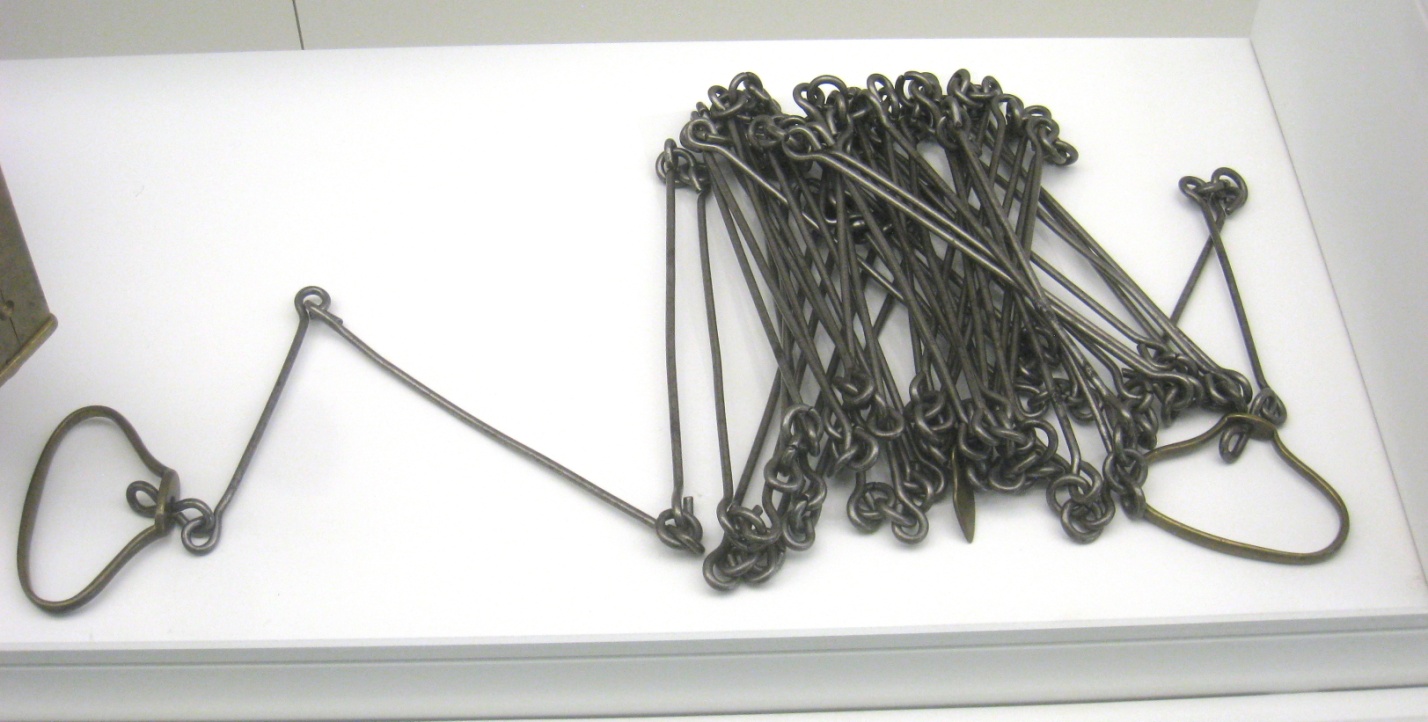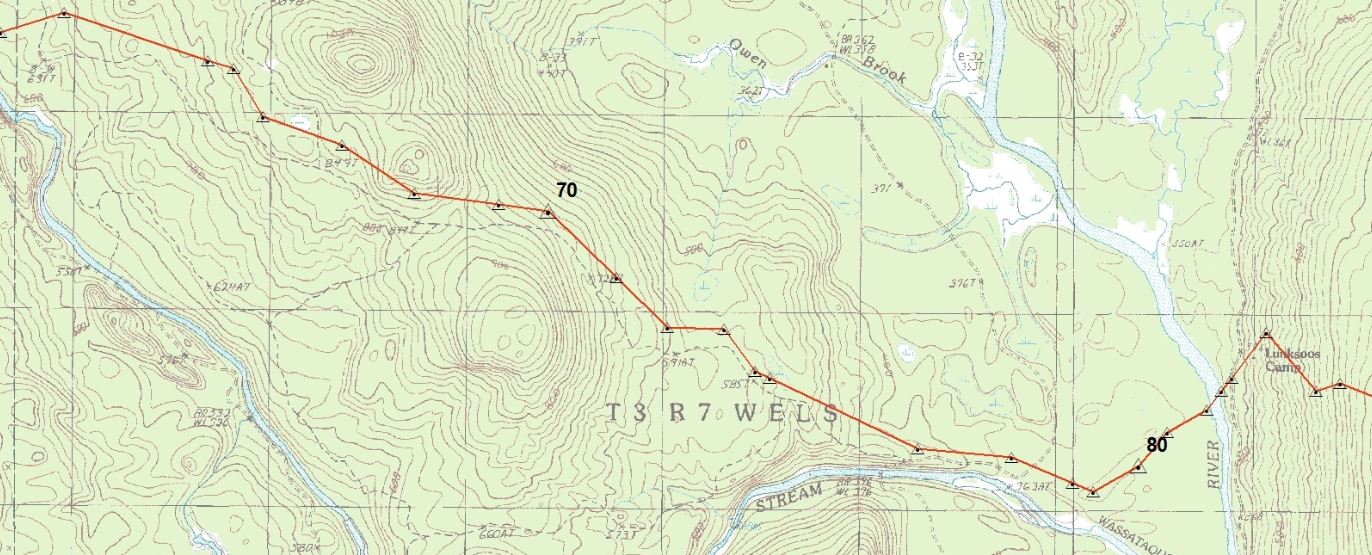On April 9, 1856, the Maine legislature approved a charter for a company consisting of Shepard Boody and others, for the construction of a road from the Aroostook Road to the summit of Mt Katahdin.
The route was surveyed and mapped in 1858, and on November 10, 1859, Shepard Boody sold, for one hundred dollars, all of his interest in the company to William Laweson its new president and G. P. Sewall, its clerk
John Neff in his book, KATAHDIN an Historic Journey, describes why a Mount Katahdin Road Company would have been chartered. At the time, there was a national urge to tame the wilderness and “the Katahdin area was subject to the same romantic notions”. The Road Company planned to make money by collecting tolls. Mount Washington was under development “and by 1859 a cog railroad was transporting visitors to Mount Washington’s summit”. In 1847, Marcus Keep envisioned a Katahdin Mountain House at the Katahdin Lake outlet. There were proposals to build a hotel at Chimney Pond and a bridal path to the summit of Katahdin. These proposals continued until well after the turn of the century.
Shepard Boody had been hired in 1838, by the land owners of T6-R11 WELS, to design and construct the Telos Cut, which would allow the waters normally flowing 80 miles north from Telos Lake to the St. John River and on down to Canada, to be diverted south, from a dam on Chamberlain Lake, to the East Branch of the Penobscot River and then down to Bangor. The project was completed in 1841.
The Journal and Survey of the road chartered by the Maine legislature, to the summit of Mt Katahdin, reports that the survey crew left Patten, Maine, Nov 1st 1858. It was not said how they travelled to Patten, but since a railroad to Patten was not completed until the 1890’s, they probably came from Old Town.
The survey crew consisted of:
David Haynes Surveyor Marcus R. Keep Chainman Charley Lyon Chainman Thomas Haynes Axe man
They traveled to the summit of Katahdin to start the survey.
“Proceed by stage and wagon to No 3 Range 5, and then by wagon and on foot to No 3 Range 6 and dine at Stacey’s, [probably at present-day Stacyville] Afternoon proceed to No 3 Range 7, sleep at Morrils”. [Morrills must have referred to the proprietors at the Hunt Farm at that time, because]: “on Tuesday Nov. 2nd, at 6 o’clock proceed up the East Branch of the Penobscot about one mile, [which is about one half mile south the present Luksoos EPI camps] raft over the river, thence follow up the N side of the Wassataquoik eight miles, ford the stream and dine at Barnett’s, camp on the south side of the stream [Wassataquoik]. Afternoon proceed westerly and camp at the outlet of Katahdin Pond. Wednesday Nov. 3rd, leave camp, and proceed westerly and arrive at Chimney Pond in the basin at 3 o’clock and camp. Thursday Nov. 4th ascend to the summit and commence our survey of the road at the corner of a rock marked K. It being the highest part of the mountain.” [The author has never heard of anyone searching for the “K” or any mention of it. The USGS set survey placques on the summit in 1941 and made no reference to it.]
The survey crew then proceeded measuring down through The Table Land “to the brink of the precipice Angle No 4, [ the approximate location of the Saddle trail].
From here “to the NE inlet of Chimney Pond, this distance obtained by try angle as the face of the mountain is such that it was doubtful of obtaining correct measure with the chain”
Friday Nov 5th and Saturday 6th, the crew traversed approximately parallel to today’s Chimney Pond trail, crossing the present road about half way between Avalanche Field and Roaring Brook and then proceeded on to Sandy Brook and “to a Maple tree, marked Angle No 12, standing in Katahdin path”. This point is on the current trail to Katahdin Lake. They continued on to a beaver dam. “We arrived here at 6 o’clock, and there is every appearance of snow storm, we leave the line and go ahead to the camp, at the outlet of Katahdin Pond and remain for the night.”

Sunday Nov 7th, “Remain in camp all day, it being very stormy”. This had to be Marcus Keep’s cabin and although Marcus Keep is recorded in the survey notes as a chainman, he was also a guide and had been guiding people to the summit of Katahdin since 1846.
Monday Nov 8th ,“we find a foot of snow on the ground; return to the beaver dam and continue the survey to a stump in Keep chopping marked angle No 18.” This is at the outlet to Katahdin Pond. From here on they do not record each day‘s work. At angle point No. 22 the crew is on the center line of No 3 Range 8, and 30 chains south of the Monument Line.
At angle point 33 they cross Wassataquoik stream and are 50 links south of the Monument Line. “Since passing angle No21 [to No 32] our courses have been Barnett logging road”.
The Monument Line was established in 1820, by the Act of Separation whereby Maine became a state separate from Massachusetts. At that time, the entire northern portion of what is now the State of Maine remained un-surveyed, and the location of the international boundary was unclear. It was estimated that there were 6 million acres to be surveyed. The Monument Line was established to aid in the equitable distribution, between Maine and Massachusetts, of land in this area that had not been conveyed prior to 1820. With few exceptions, all of the land north of the Monument Line was subdivided into square Townships with six mile borders. This section of the Monument Line was surveyed November 5th 1825 by Joseph Norris.
Surveyor David Haynes’ Field Notes record course, distance, and remarks for example:
Course Distance Remarks
S 57 E 42 00 To a Birch marked angle Angle No 7. Growth spruce & fir, surface even.
N 30 W 25 50 To a maple tree marked Angle No 14. land stony, growth small.
The courses, which are compass bearings, were taken to the degree, and the distances were recorded in chains and links. The remarks column was standard procedure for the surveyors of the day because they were explorers reporting back to the land owners on the quality of the soil and timber of the area they were traversing.
Chains have been used to measure horizontal distances since the early 17th century, if not before. In 1620 Edmund Gunther introduced a chain with 100 links that measured 66 feet, the link being 7.92 inches. Tapes of steel alloys with a very low coefficient of expansion were not introduced until around the turn of the 20th century. * Woods surveyors continued to use the 100 link chain for many years probably because they were more rugged and less likely to break than early steel tapes. Use of the Chain measure was efficient. Ten chains by one chain is an acre. 80 chains is a statute mile, so surveyors did not have to do any complicated mathematics. By foot measure, in contrast, a square acre is 208.69 feet on a side, which requires more complicated mathematics.

This is a 100 link 66 foot long chain. Each link is 7.92 inches

The Road Company’s Journal [kept by the surveyor, Haynes] indicates that the next 5 miles follow very closely the existing abandoned tote road along the northerly side of the Wassataquoik River. At angle No 57 the journal notes “the division line of No 3 Range 7,” and then the crew came “to the East Branch of the Penobscot,” which was 3 chains and 50 links wide. After the crew crossed the East Branch, they passed close to the current location of the Lunksoos Camps, which were not built at that time. They continued on through the woods “to the Aroostook Road at a point one chain northerly from the south east corner of Theodore Grafton garden lot in No3 Range 5”
Although there is no mention in the remarks about the hardships that the crew faced, there had to be many. In addition to equipment including chain, compass and axes, they had to carry some kind of shelter, blankets, cooking gear and food for many days. This, along with the cold and snow and at times traveling through uncharted forests made this a truly difficult task.
The Mount Katahdin Road was never built, although the last few miles from Stacyville to the Aroostook Road follow existing route 11, and the section from the Wassataquoik crossing to the East Branch follows an existing tote road that has been abandoned and is grown over.
The question arises, why was the road never built? The remoteness of the area certainly was a factor, and logging operations were making it difficult to maintain trails and changing the character of the country. The Civil War had just ended, and people were probably looking west for their investments. In contrast to the situation at Mt Washington, the railroad did not reach Patten, Maine until the 1890’s, more than 30 years after the route was surveyed. By that time the Millinocket area was developing and the access to Katahdin was moving to the south. Many feel that it is fortunate that the road was not built and eventually the access to Katahdin would be from the south.
The surveyor, David Haynes, prepared a map of the proposed road from the field notes. The original field notes and map are in the James W. Sewall Company Vault, Old Town, Maine in File 5 No.5.
This account was written for Elliotsville Plantation Incorporated (EPI) and those at the National Park Service (NPS) working on the proposed Maine Woods National Monument. The area of the survey discussed makes reference to lands included in the Monument area, and is historically significant.
The author, Earl Raymond, is member of the International Appalachian Trail’s Maine Chapter. The trail’s starting point is just beyond Katahdin Lake and continues 30 miles through the EPI land to Matagamon, except for a short section near the East Gate of Baxter Park. During the last 13 years, Earl has helped design and maintain the trail, along with traveling over much of the proposed National Monument area. He is a graduate of the University of Massachusetts and the Yale School of Forestry, is a Professional Land Surveyor and Licensed Forester. He retired as the Chief Operating Officer of Sewall Company in Old Town, Maine, and stays active doing research on original surveys east of Katahdin and traveling.
*Smithsonian-National Museum of National History

